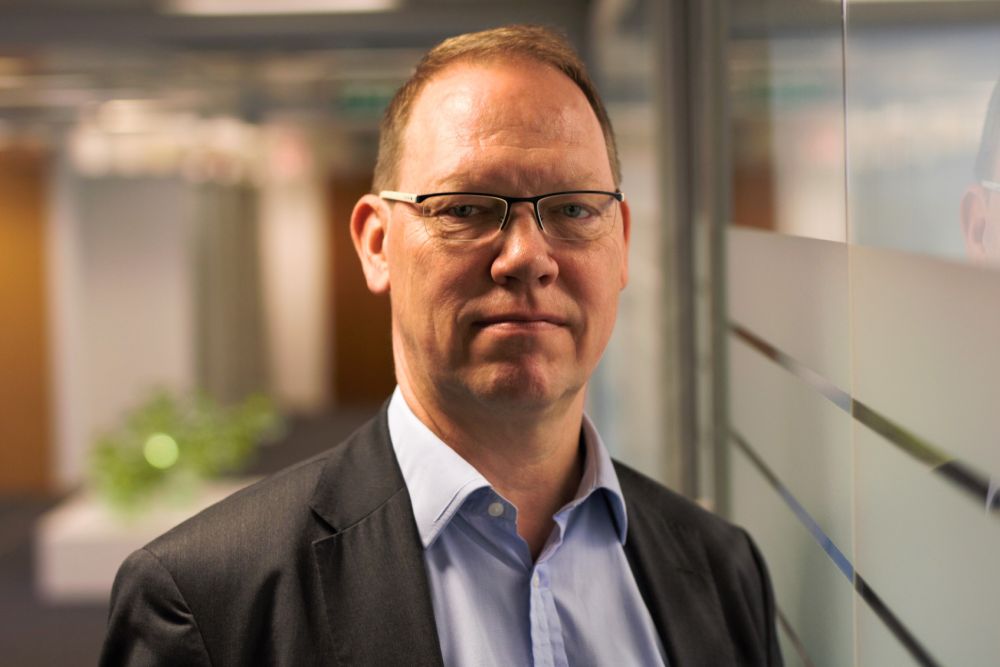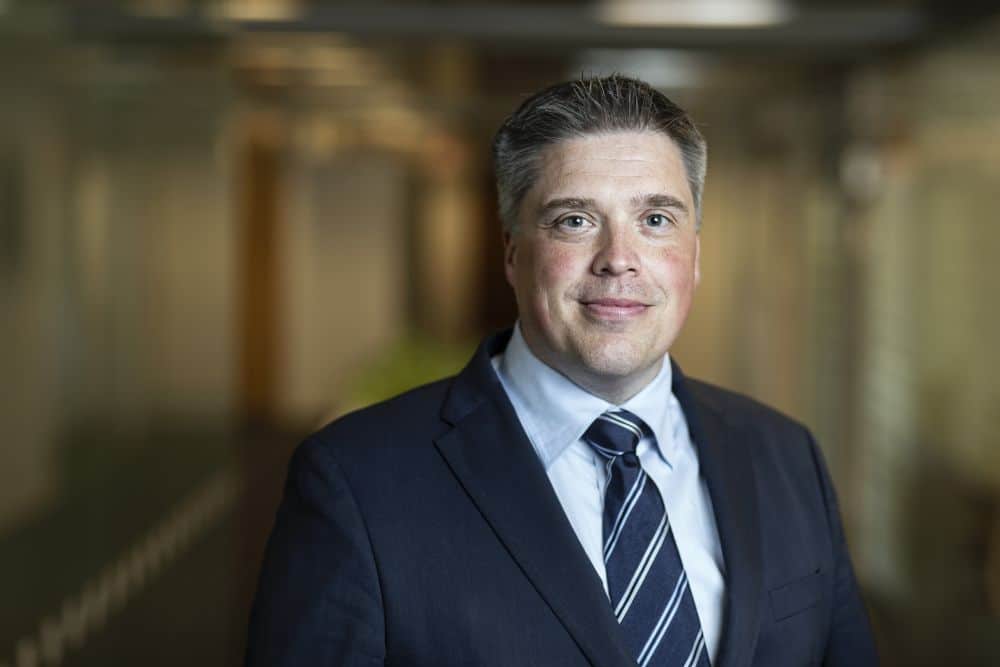Stockholm (HedgeNordic) – Institutional investors have an insatiable appetite for private assets, but there is no easy passive way of getting exposure to this growing market. For smaller investors facing difficulties accessing this market either due to insufficient monetary resources or technical expertise, Finnish asset manager Evli has built a full range of one-stop solutions to accessing alternative asset classes such as private equity, private credit, infrastructure, and timberland.
Although Evli makes direct investments in real estate and later-stage venture capital, the asset manager mostly relies on a fund-of-funds approach to invest in private equity, private credit, infrastructure and timberland. “The fund-of-funds approach goes back to the locality of investment activities,” argues Ben Wärn, portfolio manager responsible for two private equity funds of funds at Evli. “We want to provide a global platform through our fund-of-funds strategy,” he continues. “In golf terms, this approach should land investors in the middle of the fairway with diversified portfolios across sizes, geographies, and industries,” emphasizes Wärn. “To have a direct strategy on a global scale, one would require huge resources, we mitigate this by choosing a range of GPs that provide us indirectly with those resources.”
“In golf terms, this approach should land investors in the middle of the fairway with diversified portfolios across sizes, geographies, and industries.”
“We want to achieve diversified portfolios with our fund-of-funds structure,” agrees Ville Toivakainen, who joined Evli in September of last year to be responsible for private debt. “Getting the necessary diversification benefits through one single underlying manager would be close to impossible, so we pool together different kinds of investment strategies within each asset class,” he explains. “We want to offer investors a pool of managers in one fund that will serve as a core investment for a given alternative asset class,” says Toivakainen. “Especially in credit, you want to have that diversification. Diversification is the only free lunch you can have.”
“We want to offer investors a pool of managers in one fund that will serve as a core investment for a given alternative asset class.”
“Investors should get sufficiently broad and diversified, but also balanced exposure to a given asset class,” explains Richard Wanamo, who joined Evli in November 2019 to lead Evli’s infrastructure funds. “That means we need to diversify on different metrics, across different GPs, different geographies, different sectors and different value-creation strategies,” he continues. “Industry data shows that funds of funds typically exhibit a much narrower band of outcomes and lower discrepancy in returns. The risk on a fund-of-fund level is much smaller than if you invest in a direct fund.”
Full Bouquet
Evli seeks to build well-diversified funds-of-funds in each alternative asset class, but because each asset class plays a different role within a portfolio allocation, Evli’s entire alternative product offering represents a full bouquet of diversification. “Every asset class has its role in terms of diversification and return expectations,” argues Wärn. “It is hard to generalize, but we have built a platform that provides investors with all components they need for their own asset allocation needs on the private assets side,” he continues. “In private equity, investors mostly treasure the capital appreciation aspect,” explains Wärn.
“We have built a platform that provides investors with all components they need for their own asset allocation needs on the private assets side.”
Wanamo argues that “infrastructure investors are looking for the very low correlation to other asset classes.” According to Wanamo, “infrastructure is a very strong diversifier in investor portfolios and offers strong downside protection.” Infrastructure investments also feature a bond-like yield component. “An additional benefit revolves around the stable cash yields from a real, tangible assets-type of defensive asset class,” explains Wanamo.
“Each of these private assets brings something new for the total portfolio, which is why it is very important that clients have all these components in the portfolio to get all these different angles of diversification.”
“From the private debt point of view, just like all the credit investments, investors get stable cash flows,” explains Toivakainen. “From a risk point of view, you are in a different part of the capital structure, typically very senior in the capital structure,” he continues. “Private debt investments have different risk components and that brings some additional diversification for the total portfolio,” says Toivakainen. “Each of these private assets brings something new for the total portfolio, which is why it is very important that clients have all these components in the portfolio to get all these different angles of diversification.”
Manager Selection and ESG
“Because our funds are the cornerstone or only exposure investors have to an asset class, manager selection is very important,” argues Wanamo. “It is important that we pick the ones that can create alpha,” he continues. “As a fund-of-funds manager, for us, it is all about manager selection to actually recognize the managers who are providing alpha,” agrees Wärn. “Not every single private assets manager is going to provide you alpha, so you need to identify the best managers that offer the best alpha creation potential.”
“Because our funds are the cornerstone or only exposure investors have to an asset class, manager selection is very important.”
“For the manager selection process, we spend lots of time analyzing both quantitative and qualitative aspects,” explains Toivakainen. “And, of course, ESG is something that lies between those two. It is a very integrated part of the whole process,” he emphasizes. The track record is one of the key aspects analyzed in the selection process. “Given that we want to have some historical track record, we do not invest in startup funds or first-time funds,” says Toivakainen. “We have our networks and we know the GP universe, so before we were ready to invest, we typically have known the manager for several years already,” elaborates Wanamo. “That is the only way to keep track of the consistency of their strategy.”



“Then we spent lots of time analyzing the individual investments within each of the portfolios to understand the reasoning behind the investments,” continues Toivakainen. Wärn also points out “the repeatability of the performance and strategy” as another key aspect to consider. “To understand whether a current team can repeat the past performance, we need to understand where it comes from. Is it the contribution from the GP, is it luck, or is it a favorable market environment with inflated prices?” asks Wärn. “Since most of us have done direct investments ourselves, we go down to the bottom of the actual underlying investments to understand the DNA of the GP,” he adds. “We have several hundred fund managers coming through every year and we do a couple of commitments a year, so our biggest job is to say no.”
“We have several hundred fund managers coming through every year and we do a couple of commitments a year, so our biggest job is to say no.”
Understanding an underlying manager’s ESG practices is an integrated part of Evli team’s selection process. “The ESG assessment process starts from the initial discussions we have with the managers right up until we get the final payment from that fund,” explains Toivakainen. The whole process involves “making sure that the managers are doing the right things so that we do the right thing,” according to Toivakainen. “If there are some concerns, we have active dialogues with the managers to find solutions and provide them ideas on how to improve their processes until we get comfortable to invest.”
Both investors and managers have made substantial progress in recent years towards embracing ESG. “When I started 15 years ago, ESG wasn’t a thing at all, so you had to explain to GPs what it is all about,” says Wanamo. “But it has become much better. Very small and startup GPs find it more difficult to embrace ESG in a minacious way,” he elaborates. “Most veteran GPs may already have dedicated ESG resources, have clear systems and KPIs for the portfolio companies on what they track in terms of emissions or worker incidents or whatever it is that that is relevant for that company and sector.”
Solving the Commitment Challenge
One of the most frequent challenges faced by institutional investors when allocating to private assets is the sizing and timing of their fund commitments. With investors often maintaining a target allocation with a broader investment program, the success in achieving that target depends on a range of nuances, including difficult-to-predict future cash flows, overall fund performance, and the timing of capital calls and distributions. “One of the biggest, if not the biggest challenge, that investors face is that they do not have any educated guesses or analysis saying how much to commit over time to reach a target allocation,” says Toivakainen.
“One of the biggest, if not the biggest challenge, that investors face is that they do not have any educated guesses or analysis saying how much to commit over time to reach a target allocation.”
Evli has developed a tool allowing investors to estimate the pattern of cash flows for planning purposes. “The introduction of the cash flow modeling for planning purposes has been resonating extremely well with our clients,” says Wärn. “Finally, they get some visibility in terms of how they should act,” he adds. “This toolbox has been really helpful for the expansion of our platform,” which now oversees close to €1.3 billion.
This article featured in HedgeNordic’s “Private Markets” publication.
